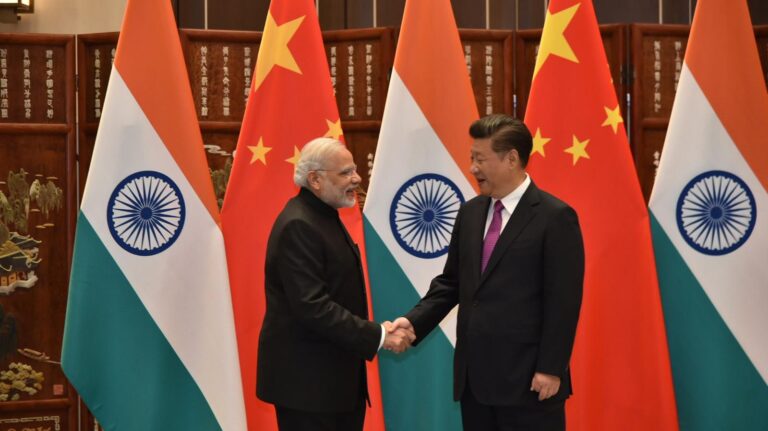New Delhi – Indian Prime Minister Narendra Modi met with China’s top diplomat in a significant step toward mending ties between the two Asian giants. The high-level engagement reflects a growing effort by both nations to stabilize relations amid regional tensions and shifting geopolitical dynamics. As India and China seek to rebuild trust and enhance cooperation, the meeting signals a potential thaw in what has been a strained relationship over recent years.
Modi and China’s Top Diplomat Discuss Strategic Stability and Economic Cooperation
Premier Narendra Modi and China’s top diplomat engaged in a candid dialogue focusing on enhancing strategic stability amid rising regional uncertainties. The talks underscored the importance of maintaining peace along the borders while expanding avenues for dialogue to prevent misunderstandings. Both leaders emphasized the necessity of transparent communication as a cornerstone for building mutual trust. A renewed commitment to resolving contentious issues through diplomatic channels signals a hopeful shift in bilateral relations.
Economic cooperation also took center stage during the discussions, with both parties exploring opportunities to bolster trade and investment. Key sectors identified include technology exchange, infrastructure development, and sustainable energy initiatives. The leaders agreed on:
- Promoting cross-border trade facilitation
- Joint ventures in green energy projects
- Enhancement of connectivity through regional corridors
These cooperative efforts aim to not only revive economic growth but also reinforce regional stability.
| Focus Area | Proposed Initiatives | Expected Outcomes |
|---|---|---|
| Strategic Stability | Regular dialogue mechanisms | Reduced border tensions |
| Trade Enhancement | Tariff adjustments and logistics improvements | Increased bilateral trade volume |
| Green Energy | Joint research projects | Sustainable regional development |
Implications of Renewed Dialogue for Regional Security and Trade Dynamics
The recent high-level meeting between India’s Prime Minister Narendra Modi and China’s top diplomat signals a pivotal shift in the geopolitical atmosphere of Asia. This renewed dialogue opens pathways to easing long-standing border tensions, which have hitherto hampered regional stability. By fostering communication, both nations aim to prevent military escalations that could have detrimental ripple effects across neighboring countries. Enhanced diplomatic engagement also creates avenues for collaborative security arrangements, promoting peace and vigilance against non-traditional threats such as cyber warfare and terrorism.
Beyond security, the resumption of talks is expected to invigorate cross-border trade, which has suffered from intermittent disruptions and tariff impositions in recent years. The normalization process may lead to the relaxation of trade barriers, unlocking new markets and investment opportunities that benefit not only India and China but also the broader Asian economy. Key areas of potential growth include:
- Infrastructure development initiatives like the Belt and Road Project adjustments
- Enhanced bilateral supply chain integration in technology and manufacturing sectors
- Improved cross-border logistics and customs cooperation
| Aspect | Potential Impact |
|---|---|
| Military De-escalation | Reduced border skirmishes and confidence-building |
| Trade Volume | Projected growth of 10-15% annually post talks |
| Regional Stability | Strengthened multilateral cooperation in Asia-Pacific |
Recommendations for Sustaining Momentum in India-China Diplomatic Engagements
Enhancing transparent communication channels between New Delhi and Beijing remains paramount to avoid misunderstandings and foster trust. Both nations could institutionalize regular high-level dialogues beyond summit meetings, allowing for swift conflict resolution and cooperative frameworks on trade, border management, and climate change initiatives. Encouraging exchanges in academics, culture, and technology sectors will further build people-to-people ties, laying a durable foundation for diplomatic progress.
To maintain consistent engagement, policymakers should focus on:
- Establishing a bilateral mechanism dedicated to tracking implementation of agreements
- Promoting joint development projects in strategic regions to boost economic interdependence
- Increasing collaboration in multilateral forums on regional security and economic stability
- Facilitating transparent dialogue on sensitive issues such as border disputes and cybersecurity
| Key Area | Recommendation | Expected Outcome |
|---|---|---|
| Diplomatic Communication | Regular high-level dialogues | Reduction in tensions; faster issue resolution |
| Economic Cooperation | Joint infrastructure projects | Deepened economic ties; shared prosperity |
| Security Collaboration | Multilateral engagement on regional stability | Enhanced trust; collective security framework |
To Conclude
As India and China continue to navigate the complexities of their bilateral relationship, the recent meeting between Prime Minister Narendra Modi and China’s top diplomat marks a significant step toward restoring dialogue and easing tensions. Both Asian powers appear committed to rebuilding trust and exploring avenues for cooperation amid a shifting geopolitical landscape. Observers will be watching closely to see how this diplomatic engagement influences regional stability and economic collaboration in the months ahead.




